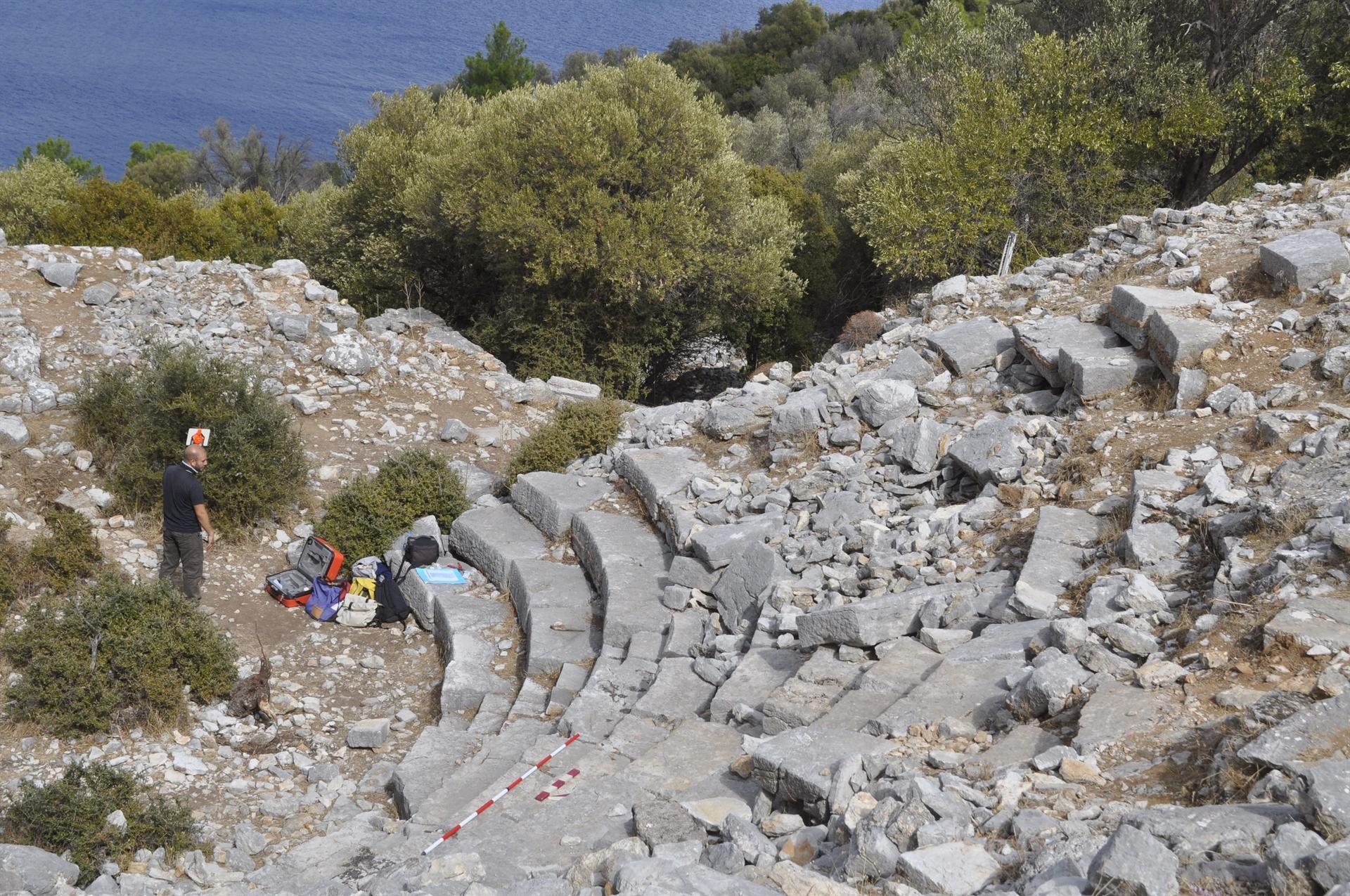Rescue excavations to take place in ancient city of Amos
MUĞLA

Rescue excavations in the ancient city of Amos for a tomb, which was unearthed during illegal excavations, and a walking track located in the region, is set to commence as part of a surface research project by the Muğla Sıtkı Koçman University (MTSÜ) and the Marmaris Chamber of Commerce.
The excavation works, which were started in the 2,000-year-old archaic city last year, are estimated to have expanded to a larger area. The rescue excavation for the burial chamber will be starting soon.
Dr. Mehmet Gürbüzer, the project’s advisor and an academic at MSKÜ’s archeology department, said that with the excavations, they were able to reach a new “historical pattern” in the ancient city.
Noting that the tomb has been ruined due to the illegal excavation conducted in the past, Gürbüzer said that the project for its rescue is prepared.
“Maybe we can encounter other surprises during the excavation,” he added, hinting at the possibility of unearthing undiscovered ancient ruins.
Meanwhile, Marmaris Mayor Mehmet Oktay told journalists that the cooperation between the archeological team and the chamber of commerce immensely contributes to Marmaris’ tourism.

One of the most important cities of the Union of Rhodes, Amos means “the Goddess Temple” in a dialect of Ancient Greek.
Known as Samnaios in the Hellenistic era, Apollon was considered the leading god of the city.
The city is surrounded by 1.8 meters thick and 3.5-meter-high walls and towers. The city, whose most important surviving structure is a theater, survived through the Hellenistic era until the Eastern Roman era.
The ancient city also has terraces where the coves around the area can be seen, together with the sunrise and sunset.
Rental agreements from the second century B.C., which were unearthed during excavations in 1948 by Professor George Ewart Bean, show that Amos’ history dated back to 2,200 years.
The ancient city was declared a first-degree archaeological site on Oct. 14, 1978.
















